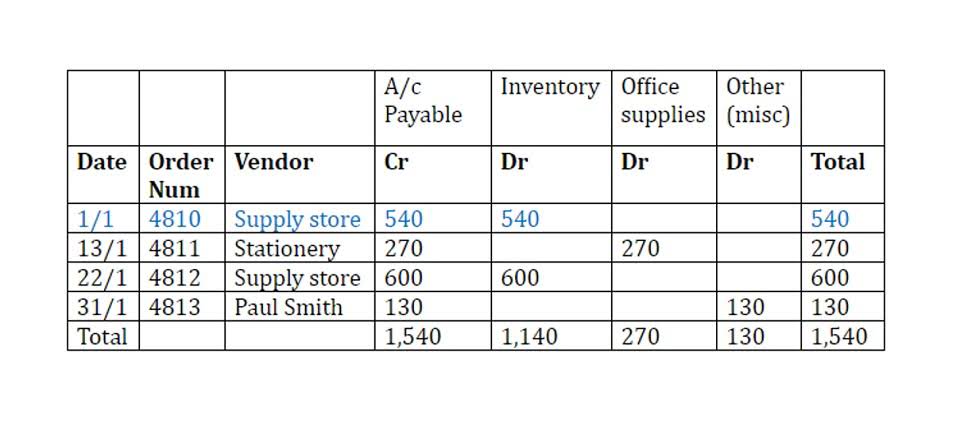Content
- How Everlance Can Help With Your Schedule C And How To Get Your Mileage Report
- Schedule C Instructions Part Iii: Cost Of Goods Sold
- Part V: Other Expenses
- What Is A 1099 Form And How Does It Work?
- Input General And Earnings Information On The Schedule C
- Using Schedule C
- What Are The Tax Obligations Of A Sole Proprietor?
- Schedule C Filers May Need Sales Tax Permit
This is the figure you report on your income tax return. If you are self-employed, your business clients should send you 1099 forms such as 1099-NEC. These forms report the money that a business has paid you during the tax year.
That being said, there are plenty of situations where enforceable contracts do not need to be written or spoken, they're simply implied. For instance, when you buy milk from a store, you give something in exchange for something else and enter into an implied contract, in this case - money is exchanged for goods. Therefore, an oral agreement has legal validity if all of these elements are present. However, verbal contracts can be difficult to enforce in a court of law. In the next section, we take a look at how oral agreements hold up in court. The main differences between written and oral contracts are that the former is signed and documented, whereas the latter is solely attributed to verbal communication.
How Everlance Can Help With Your Schedule C And How To Get Your Mileage Report
Try to fit as many of these as possible within lines 8 through 26. You can no longer deduct entertainment expenses and the deductions for business meals have changed. A loss on the net income will be a negative number. You can also end up with a negative taxable income if your expenses total more than your income on line 28. If you are self-employed and set up your business as a sole proprietorship, you should file Schedule C with your Form 1040. The Schedule C-EZ is a shorter abbreviated version of the IRS Schedule C form.
It’s the default business structure when you earn money from self-employment without registering as a different type of business. For tax purposes, a deductible is an expense that can be subtracted from adjusted gross income in order to reduce the total taxes owed. Form 1099-NEC is an Internal Revenue Service form for businesses to report payments made to nonemployees, https://www.bookstime.com/ such as independent contractors. Severe penalties may be imposed for contributions and distributions not made in accordance with IRS rules. An ITIN is an identification number issued by the U.S. government for tax reporting only. Having an ITIN does not change your immigration status. You are required to meet government requirements to receive your ITIN.
Schedule C Instructions Part Iii: Cost Of Goods Sold
A Schedule C-EZ is used to report the profit that relates solely to your small business. If you are self-employed, it can be more difficult to file your tax return than if you just earn a salary as an employee. Fortunately, you can use something called a Schedule C-EZ to make the tax return process easier for yourself. If you qualify, the Schedule C-EZ can be a much easier and faster process for filing your taxes and should strongly be considered. Enter the total cost of contract labor for the tax year. Contract labor includes payments to persons you pay for business-related services who are not considered employees . These would be people for whom you supplied 1099 forms.
Year-round access may require an Emerald Savings® account. See Online and Mobile Banking Agreement for details. Payroll, unemployment, government benefits and other direct deposit funds are available on effective date of settlement with provider. Please check with your employer or benefits provider as they may not offer direct deposit or partial direct What Is a Schedule C deposit. Faster access to funds is based on comparison of traditional banking policies for check deposits versus electronic direct deposit. The tax identity theft risk assessment will be provided in January 2019. The tax identity theft risk assessment is based on various data sources and actual risk may vary beyond factors included in analysis.
- Most service-based small businesses won’t have any dollar values to enter in this section.
- A corporate tax is tax on the profits of a corporation that generate revenue for a government.
- If you can’t afford to hire a professional, then the next best thing will be to get good tax preparation software.
- Schedule C, Profit and Loss From a Business, is filed along with your personal income tax return, Form 1040.
- If you didn’t formally register your business, then your business shares your personal name and you would leave “business name” blank.
- If you need help completing your Schedule C-EZ, you canpost your jobon UpCounsel’s marketplace.
This is the only way to value your inventory if you're using cash accounting. Another option is Lower of Cost or Market - where you compare the price you paid for an item with its market value on a particular date each year. Therefore, certain household expenses, such as electricity, can be claimed as business expenses. The IRS has a very specific definition of a home office, so please read the instructions (C-9 to C-13) carefully. Fixed assets, such as buildings, vehicles, and equipment, cannot usually be fully deducted in a single year. A deduction for depreciation can be claimed for several years, beginning in that year. However, some assets qualify for the full Section 179 deduction.
Part V: Other Expenses
Schedule C is a form attached to your personal tax return that you use to report the income of your business as well as business expenses, which can qualify as tax deductions. As you will see by reading this article, Schedule C can be complicated, overwhelming, or confusing. We highly recommend you consult a tax professional for help, or at the very least, use tax software to complete the calculations in the form, rather than trying to fill it out by hand.
It’s a 15.3% tax made up of 12.4% for Social Security and 2.9% for Medicare. "Ordinary" essentially means that just about everyone else in your line of work also spends money on this same expense. "Necessary" means that the expense was helpful or appropriate to allow you to make money. Here are some steps you can take to reduce your chances of being chosen for a tax audit. Filing taxes may be the finish line, but bookkeeping is the marathon that gets you there. With Bench, you have a team of experts running that distance for you. Some of the form is pretty straightforward, but there are some tricky questions that might throw you off.
What Is A 1099 Form And How Does It Work?
Section 37 is the cost of labor, not including any amounts paid to yourself. Section 33 is about the methods used to value closing inventory. Your inventories can be valued at cost, the lower of cost, or market. If you have employees, you can deduct the wages you paid on this line. If you paid yourself from your LLC, you can put what wages you paid yourself here. Office expenses could include writing implements, stamps, printer paper, maybe even a printer. This section is about the depreciation of business assets.
Businesses with no formal entity structure and a single owner—called sole proprietorships—file Schedule C, Profit or Loss From Business, with their individual returns. By contrast, formally structured business entities such as corporations, partnerships, and some limited liability companies file separate tax returns. If you’re thinking about embracing entrepreneurship and striking out on your own, don’t let the prospect of business taxes make you reconsider. So long as you structure your business as a sole proprietorship or single-member LLC, dealing with the tax consequences is actually quite easy. The hardest part is keeping detailed records of your business expenses all year.
Input General And Earnings Information On The Schedule C
You may have to file a Schedule C even if you have a regular day job where you’re someone’s employee. So if you’re freelancing on the side, your self-employment means you’ll probably need to add the Schedule C to your to-do list. If you freelance, have a side gig, run a small business or otherwise work for yourself, you may need to fill out IRS Schedule C at tax time. Here’s a simple explainer of what IRS Schedule C is for, who has to file one and some tips and tricks that could save money and time. Remember that if you used your vehicle for your business, you’ll also need to enter a few questions about your vehicle in Part IV. Here’s where you’ll list the money that you earned from your business in 2021.
Schedule C of Form 1040 is a tax schedule that must be filed by people who are self-employed. It's a calculation worksheet, the "Profit or Loss From Business" statement. Your self-employment income from the year is entered and tallied here, then carried over to your Form 1040 tax return after any allowable business expenses are deducted.
Using Schedule C
If you have expenses that aren’t reflected in the boxes, you’ll record those later in Part 5, and then record those on line 27a. File Schedule C along with your individual tax return, Form 1040. And, don’t forget to calculate your self-employment tax based off your net income on Schedule C . Filling out Schedule C requires a few calculations and additional information about your business expenses. Use the following steps to help fill out Schedule C.
Send it to your state's IRS processing office, postmarked on or before the deadline, which is usually April 15. You can pay online if you e-file your tax return, but be sure to submit it before the deadline. You can also claim expenses like office supplies and equipment. Schedule C lists all your options beginning with Part II of the form. Set up your accounting software to use the categories that are relevant to your self-employment. This will make it much easier for you to complete Schedule C at tax time.
What Are The Tax Obligations Of A Sole Proprietor?
These businesses pay tax using Schedule C report business income. Tim worked as a tax professional for BKD, LLP before returning to school and receiving his Ph.D. from Penn State. He then taught tax and accounting to undergraduate and graduate students as an assistant professor at both the University of Nebraska-Omaha and Mississippi State University. Tim is a Certified QuickBooks Time Pro, QuickBooks ProAdvisor for both the Online and Desktop products, as well as a CPA with 25 years of experience. He most recently spent two years as the accountant at a commercial roofing company utilizing QuickBooks Desktop to compile financials, job cost, and run payroll.
This is because they aren’t producing and selling a product, but rather selling time and expertise. Sole proprietors and single-member limited liability companies need to fill out Schedule C when they prepare their individual 1040 tax return. Due to federally declared disaster in 2017 and/or 2018, the IRS will allow affected taxpayers an extended filing date to file and pay for their 2017 taxes.
Complete Schedule SE if your sole proprietorship or single-member LLC earns $400 or more in net profits during the tax year. However, if you’re filing your taxes by hand, you may save yourself some time by using the shorter form! You’re not required to file the EZ if you’re eligible.



